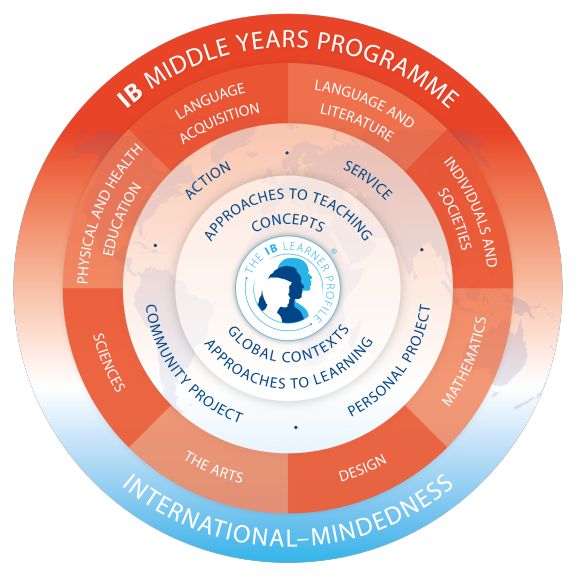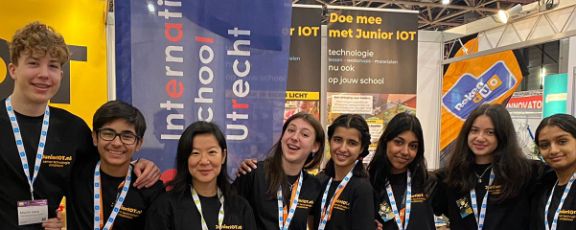The MYP aims to help students develop their personal understanding, their emerging sense of self and responsibility in their community.
The MYP curriculum framework comprises eight subject groups, providing a broad and balanced education for early adolescents. At ISU MYP students study the following subject areas: Language and Literature, Language Acquisition, Individuals and Societies, Sciences, Mathematics, The Arts (visual and performing), Design and Physical and Health Education. In Grade 10 students are given a choice of more individualised pathways to help them prepare for the IB Diploma Programme, as part of their continuum of learning. To find out more about the IB curriculum, please visit the IB website.

The MYP fosters the development of skills for communication, intercultural understanding and global engagement. That's why the MYP is underpinned by the following concepts: global contexts, approaches to learning and service as action.
Global contexts
Using global contexts, MYP students develop an understanding of their common humanity and shared guardianship of the planet. Everything they learn is linked to one or more of the following global contexts:
- identities and relationships
- personal and cultural expression
- orientations in space and time
- scientific and technical innovation
- fairness and development
- globalisation and sustainability
Approaches to learning
The focus of approaches to learning in the MYP is on helping students to develop the self-knowledge and skills they need to enjoy a lifetime of learning. At ISU we teach our students practical and self-knowledge skills, which will help them with the challenges posed by the IB MYP as well as the Diploma Programme and higher education.
Service as action
Every school around the world that teaches the MYP expects its students to become involved with their communities – an involvement that benefits both parties. Action is learning by doing and experiencing. Service is part of action and it is where IB learners strive to be caring members of the local and global community, by demonstrating personal commitment to services that make a difference to the lives of others and the environment.
